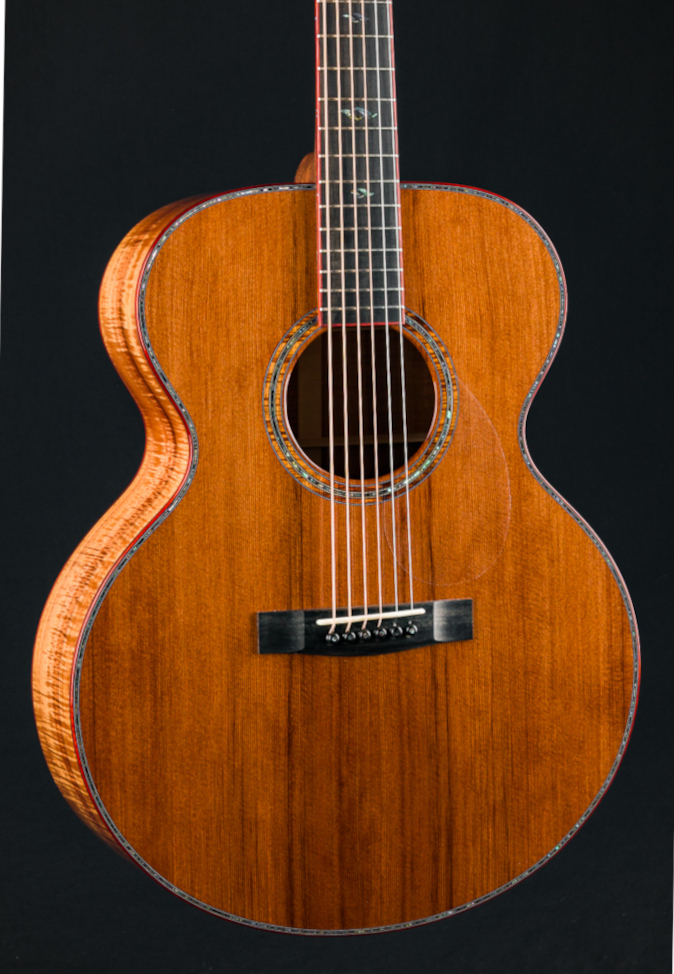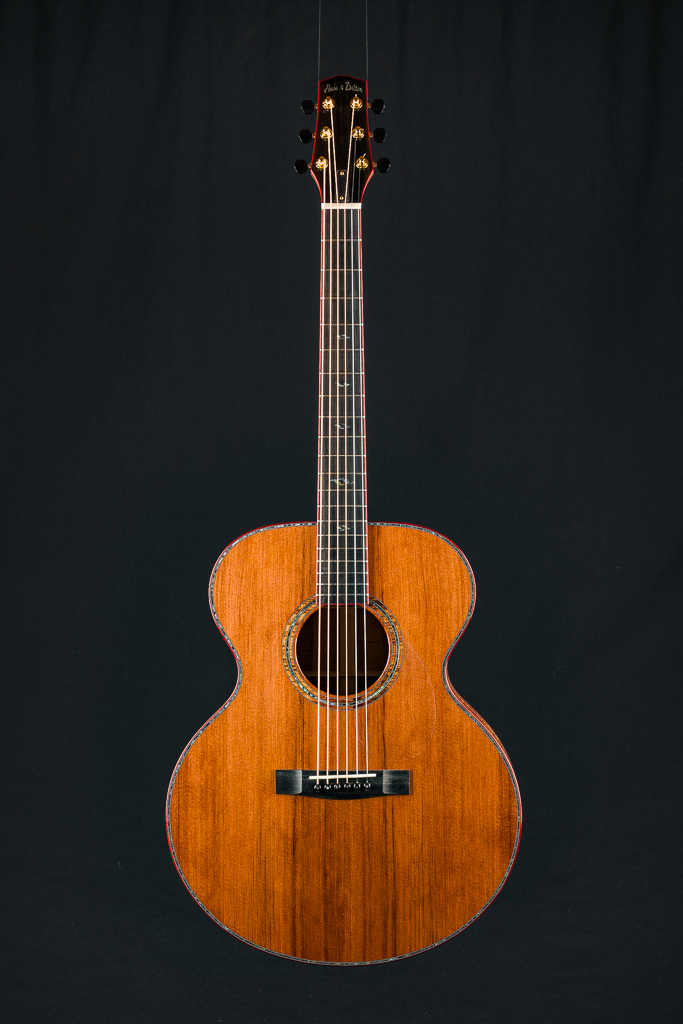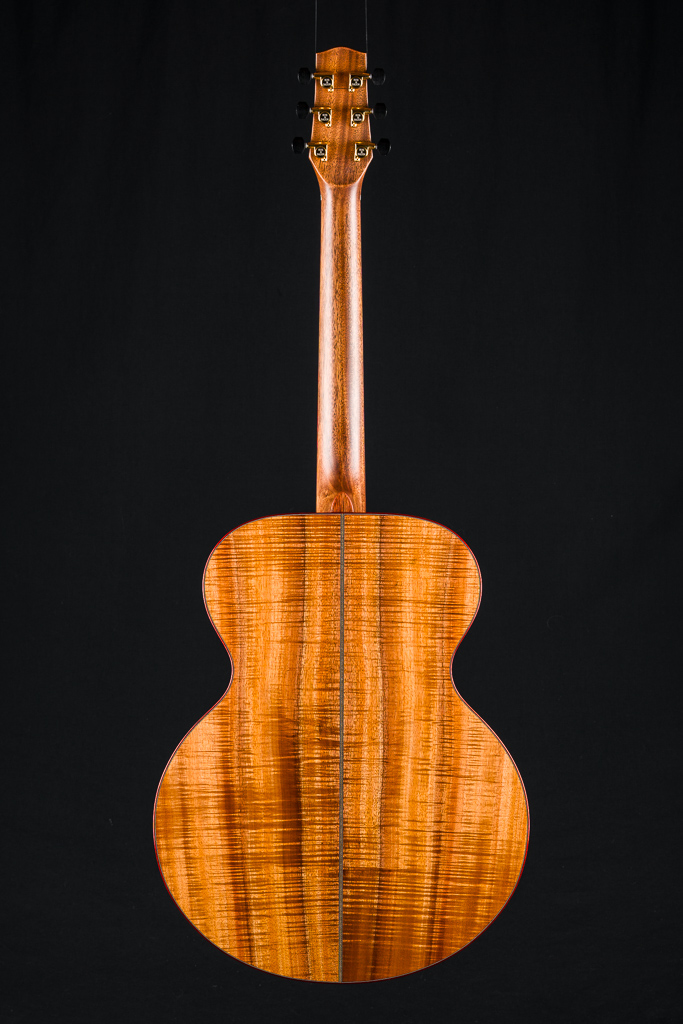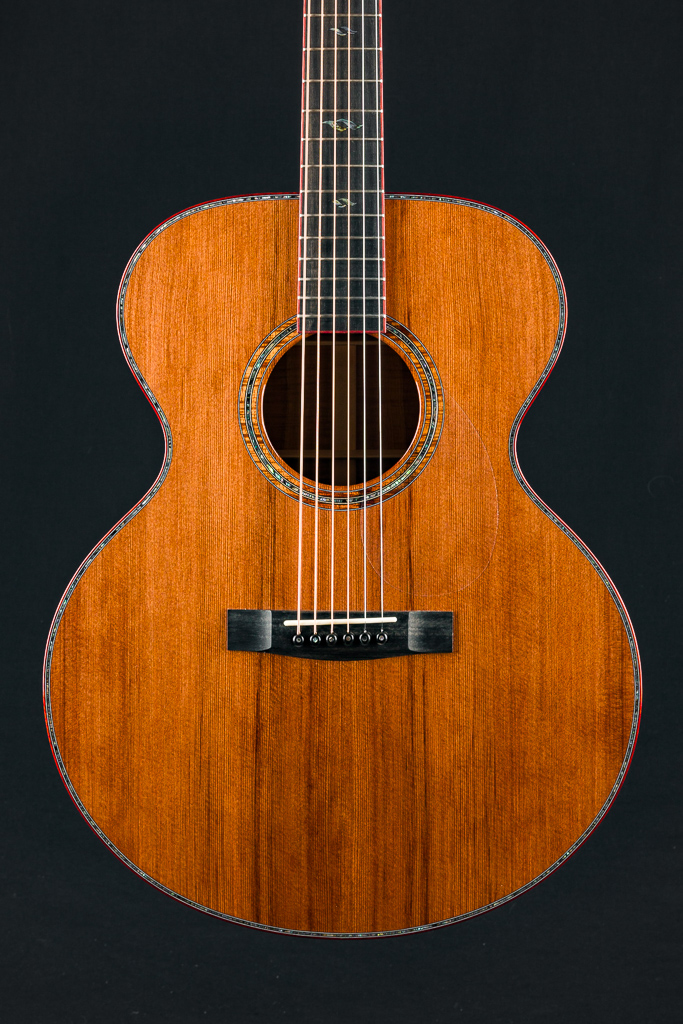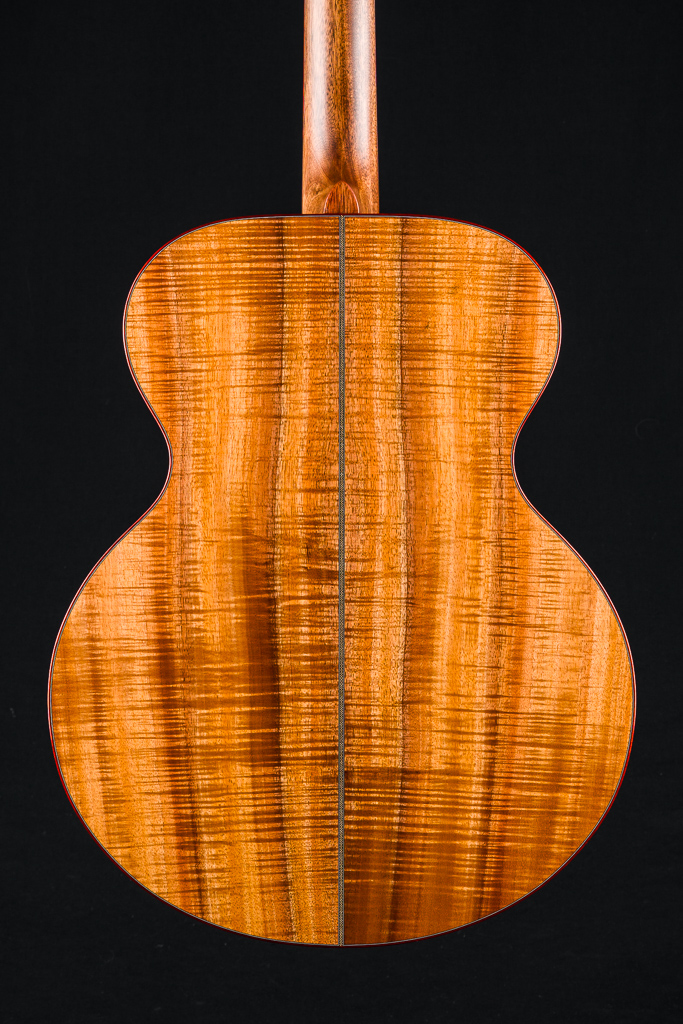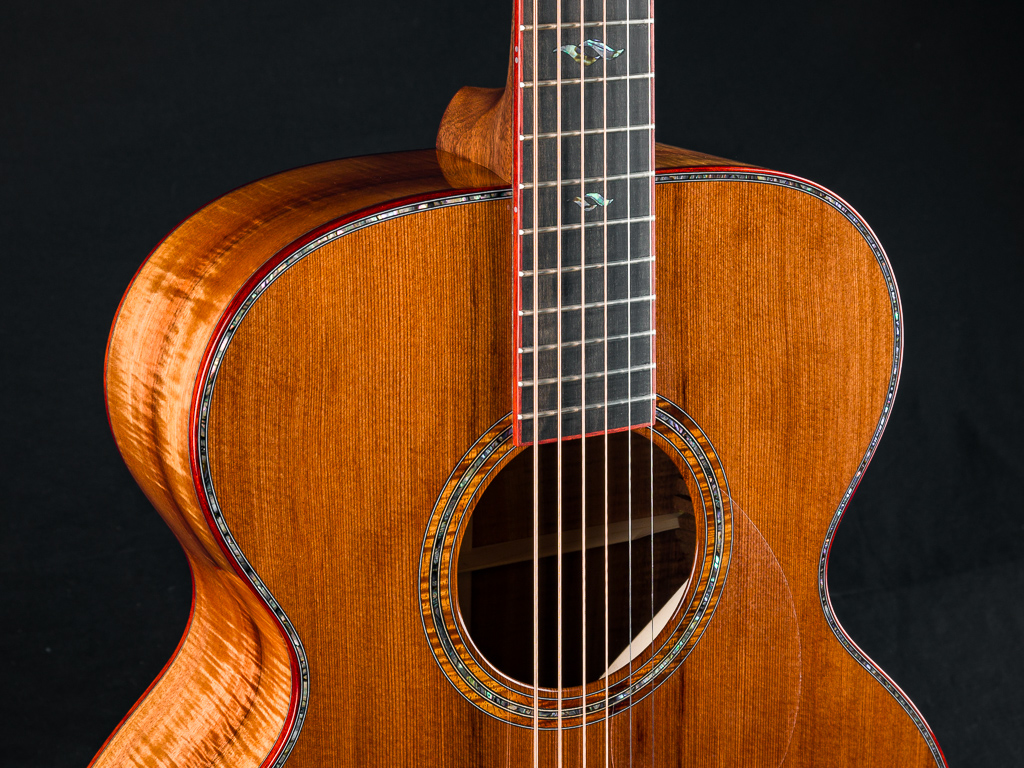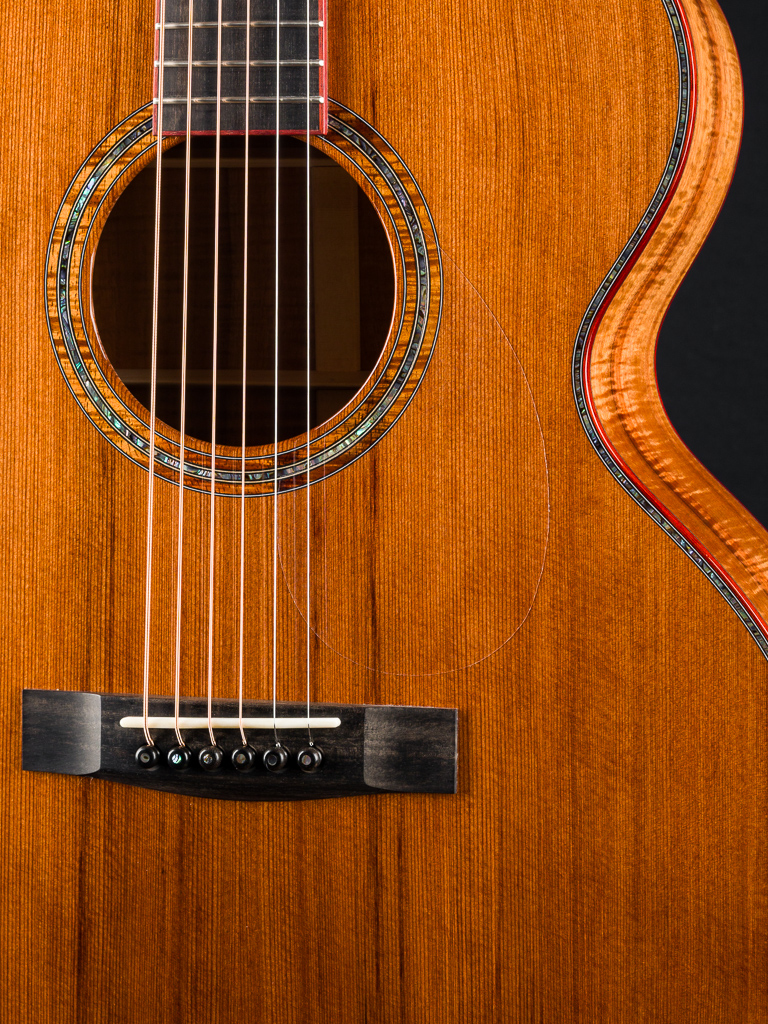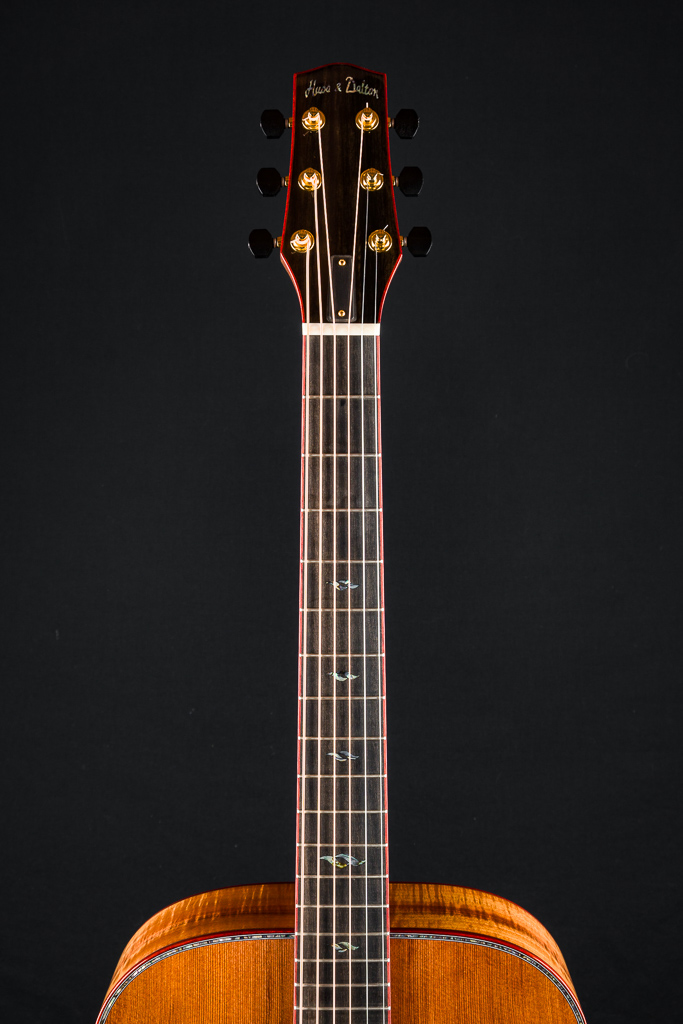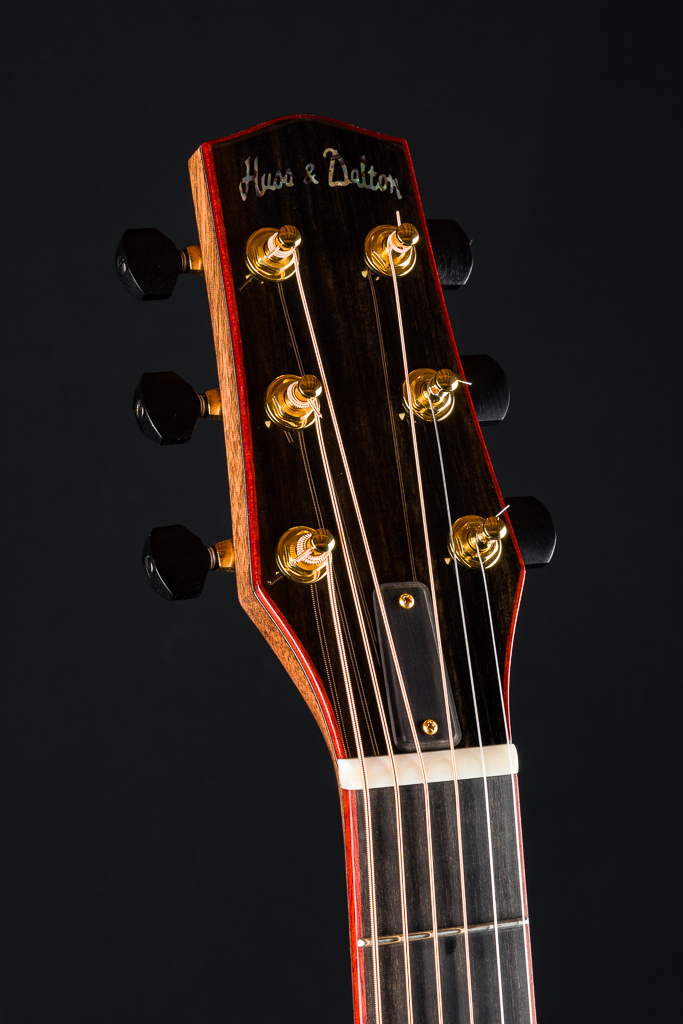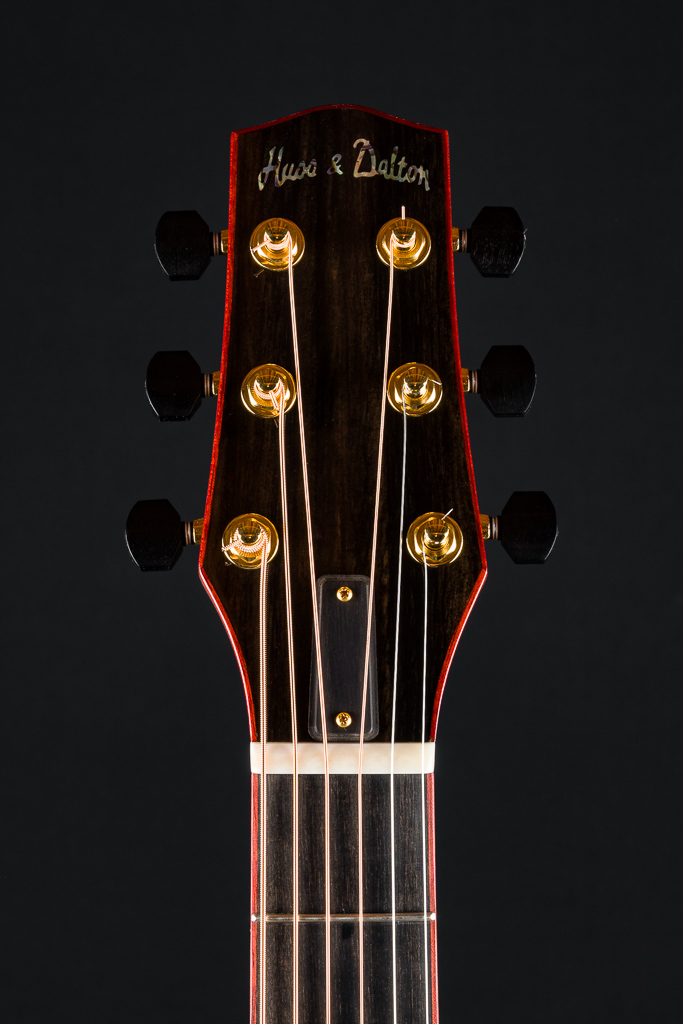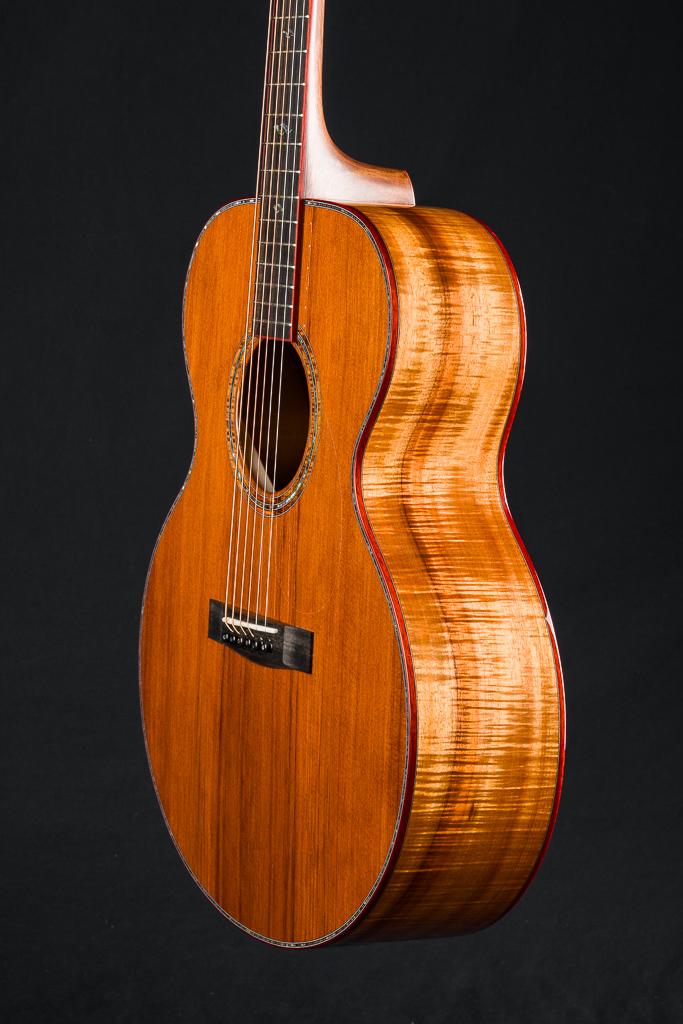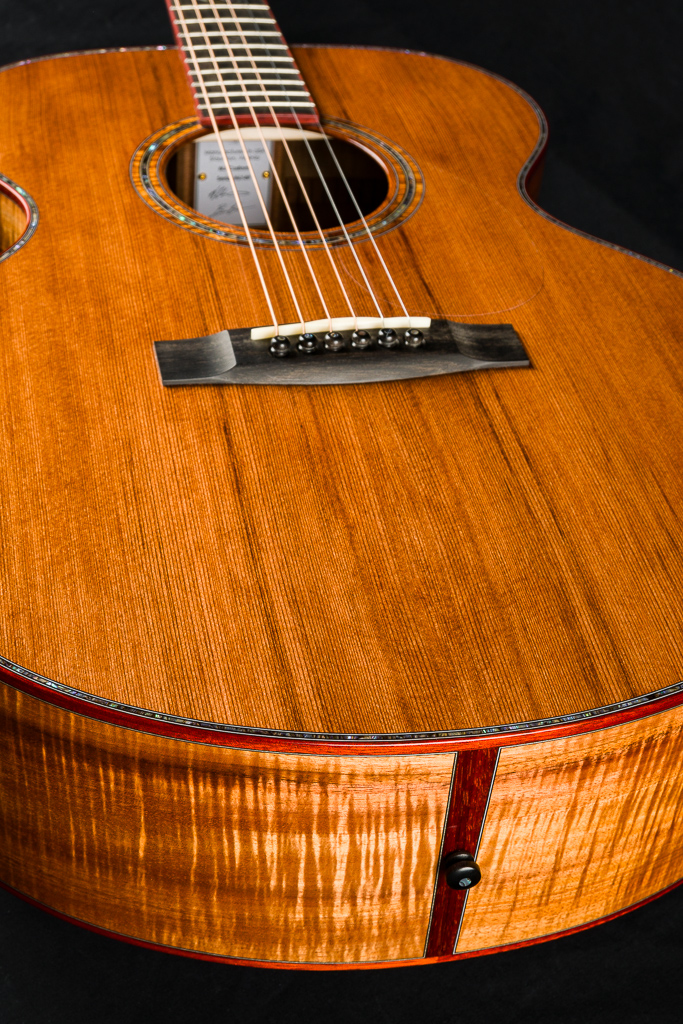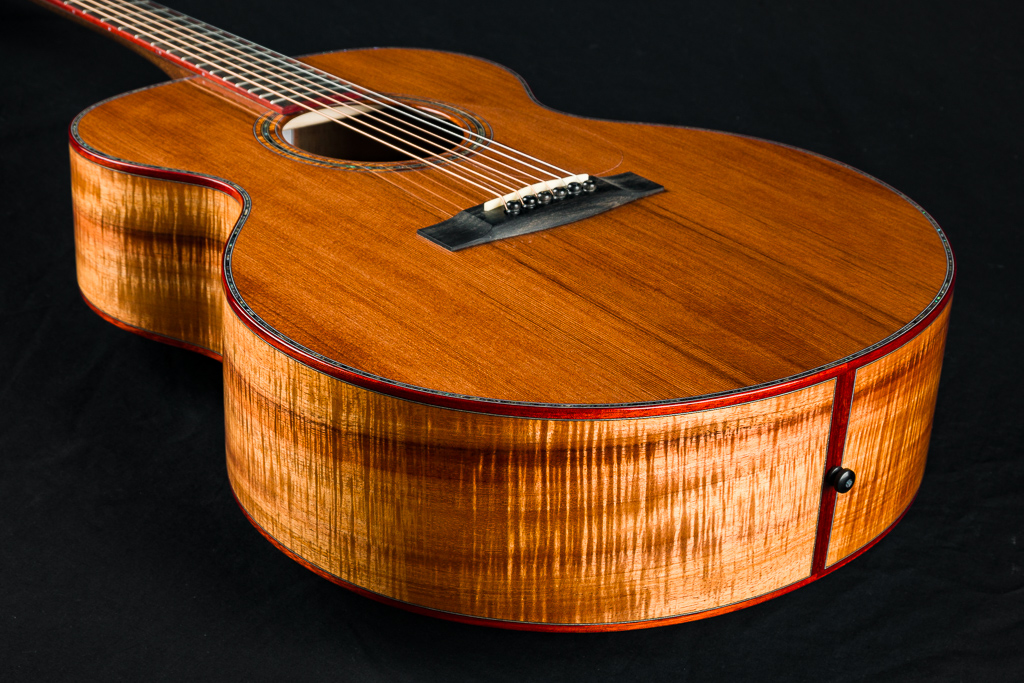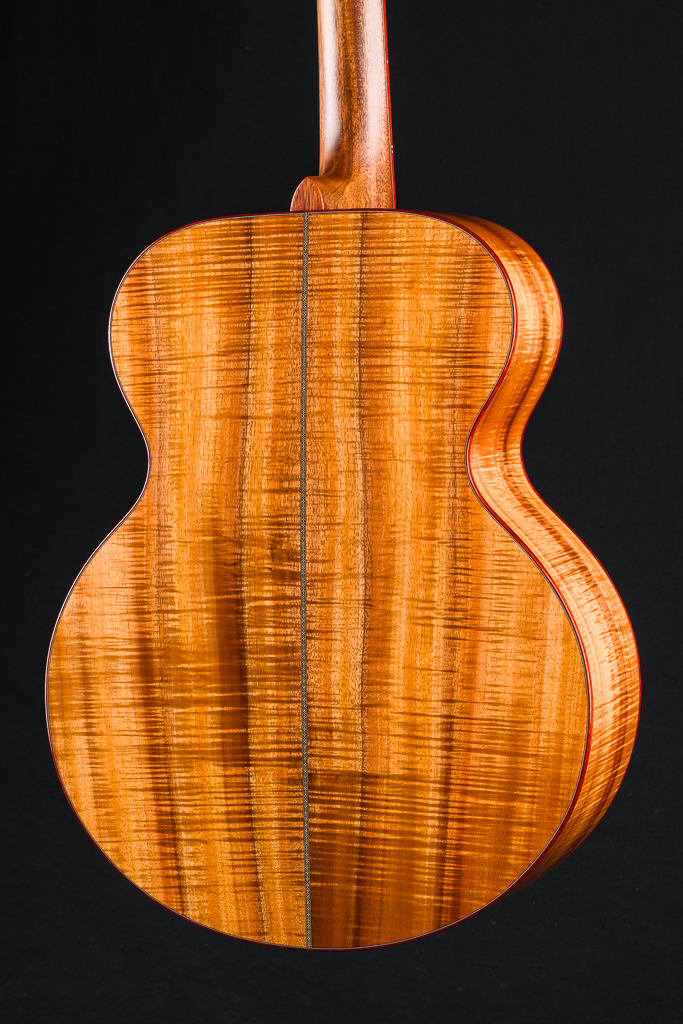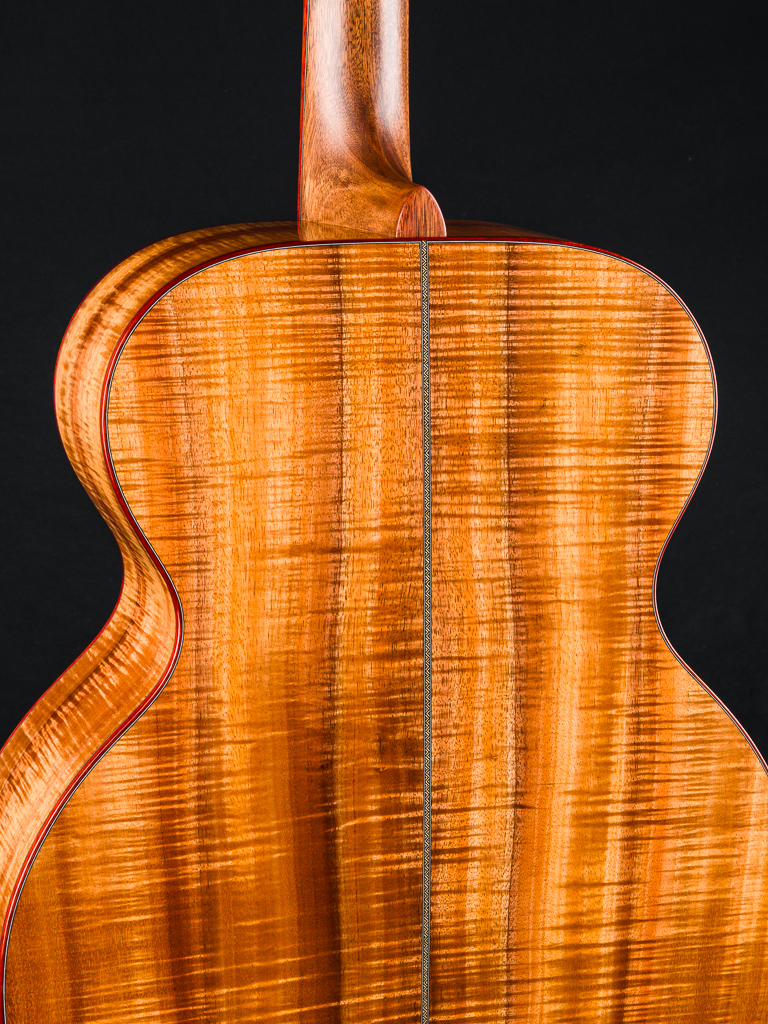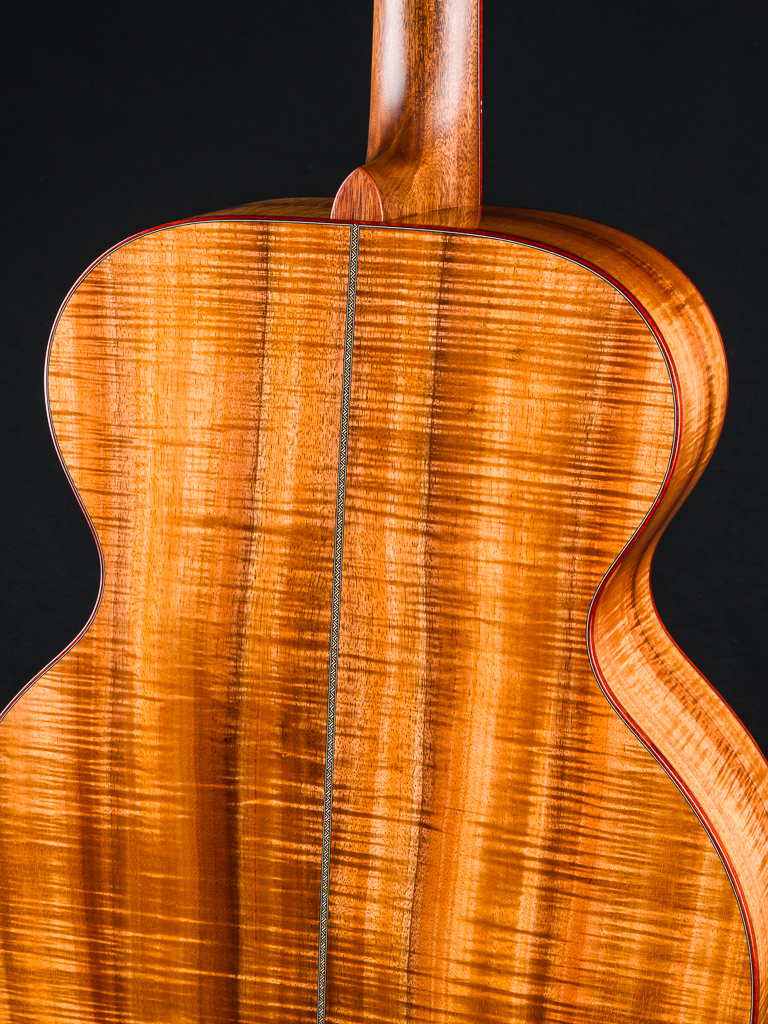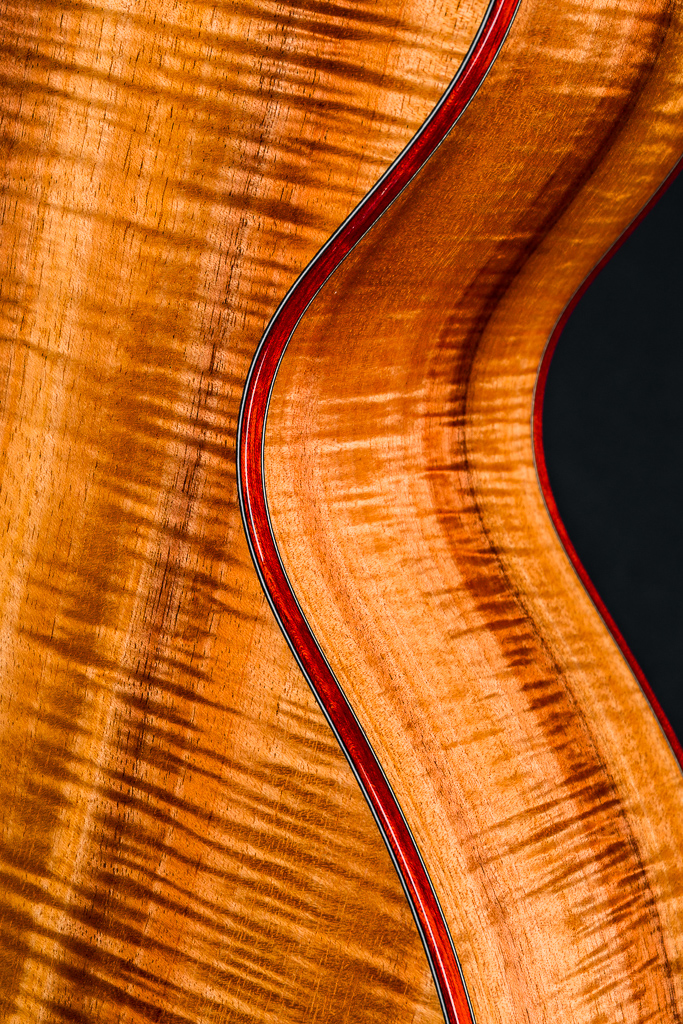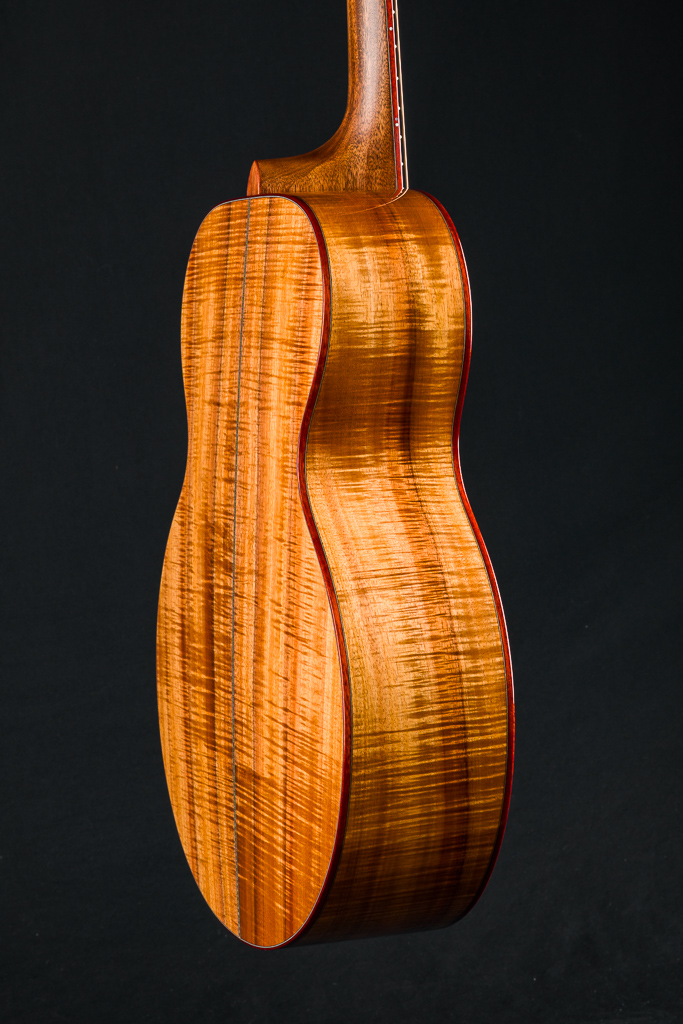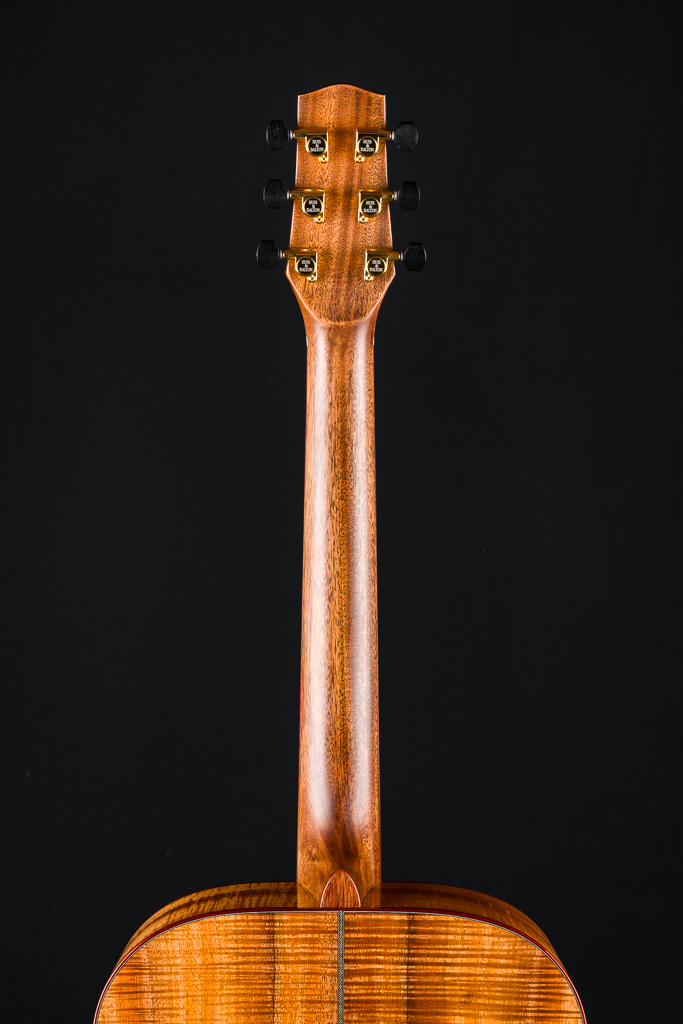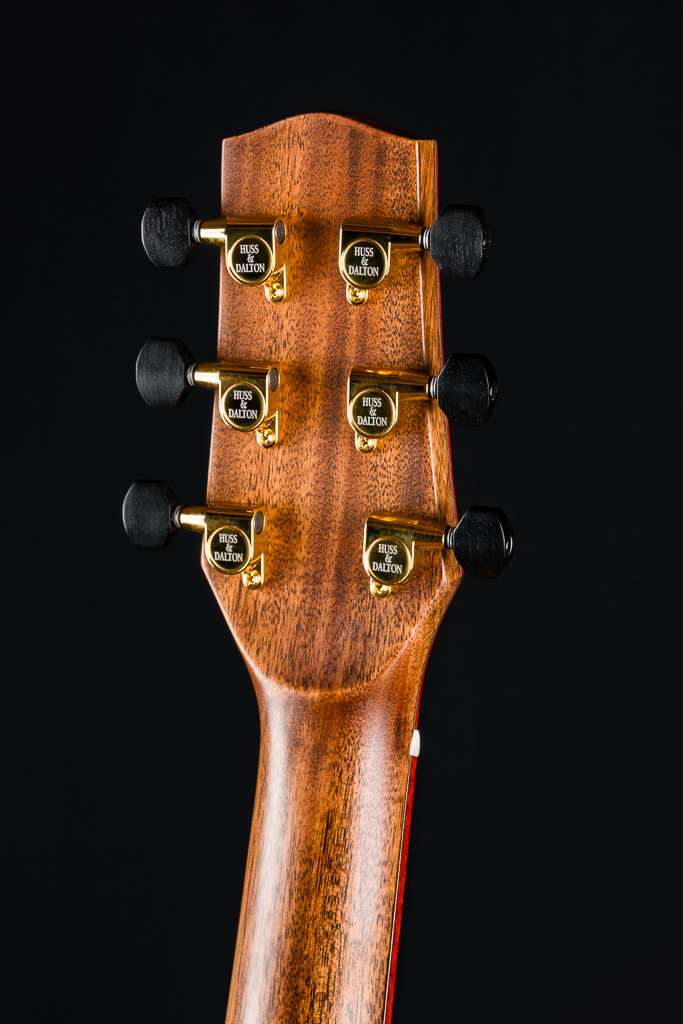The MJ is Huss & Dalton’s mid-size jumbo measuring 16″ across and 4 7/8″ deep. It has a big voice without the muddy quality often associated with guitars of this size. Many famous musicians have ascended to stardom with a jumbo guitar held in front of them. This custom MJ-41 model hand built in Staunton, VA with premium hand picked tonewoods has the ultimate wow factor.
The top is a 120+ year old set of quarter-sawn virgin old growth coastal Redwood reclaimed from a Pacific northwest bridge trestle, that was air dried naturally for all that time in the natural ideal conditions. Not to mention decades of intense vibration from locomotives, which is perfectly ideal to help season and break in this tonewood. (Read more on this wood below). The Redwood top is paired perfectly with this premium Hawaiian Koa back and sides with mesmerizing highly flamed figure and cross color. The combination of custom Blue Paua Pearl 41-style top purfling, “Ripple” fretboard inlay and rosette with Koa rings plus full Bloodwood body, neck and headstock bindings adds a rich splash of contrast and color to this one-of-a-kind Huss & Dalton build. Huge tone and show stopping beauty all in one package.
Other features include Ebony fretboard, bridge and headstock overlay, Paua Pearl rosette with figured Koa inside and outside rings, Mahogany neck with no stain, Adirondack Spruce bracing, Gotoh Gold 510 mini tuners, Abalone Pearl logo, Bloodwood wedge, clear pickguard, Ebony pins with Pearl dots, 1 3/4″ nut, 2 5/16″ saddle spacing and more.
Perfect for the fingerstyle player, this is also a great strummer and flatpicker as well. Easy to play from the lightest touch. These premium woods paired together make for one great sounding guitar with tone, complexity and a rich history.
Includes deluxe TKL tweed hardshell case and Lifetime Warranty.
Free shipping in the continental United States
About Salvaged Bridge Trestle Redwood
Throughout the coastal railways in the Pacific Northwest, large timber trestle bridges were used to span gulches, rivers and creeks. During the heyday of their construction (which lasted until the early 1950s), Coastal Redwood was the material of choice due to its size and its natural rot /insect resistance. To support the large spans needed, some timbers were as long as 26′ with cross sectional dimensions of over two square feet. The trees used to produce this wood were virgin old-growth and at least several feet in diameter. As time has passed almost all of these railway bridges have been decommissioned. Luckily, some of the wood from these decommissioned bridges has found new life as re-sawn timbers used for instrument making and this is the source of the Bridge Trestle Redwood.
Huss & Dalton’s Bridge Bridge Trestle Redwood tops are sourced from trestles that stood in the Coastal Forests of Oregon for around 120 years. During that time, the wood air-dried in nearly ideal conditions. While not all the timber salvaged from bridges has the qualities needed for great tone wood, they have been able to select the material that does. These tops have very tight vertical grain and a beautifully even coloration. Tonally, they found these tops are equal to or better than the striped Sinker Redwood tops. Along with the excellent acoustic properties, this wood provides the satisfaction of being a 100% salvaged product! It took hundreds, sometimes thousands, of years for the trees that produced the railway timbers to grow to their impressive size before being cut. There are only an extremely limited number of virgin old-growth trees still standing, most of which are protected so this wood is a rare commodity. Once it’s gone, it takes hundreds of years to grow trees with the qualities needed to produce equally impressive Tonewood
–

